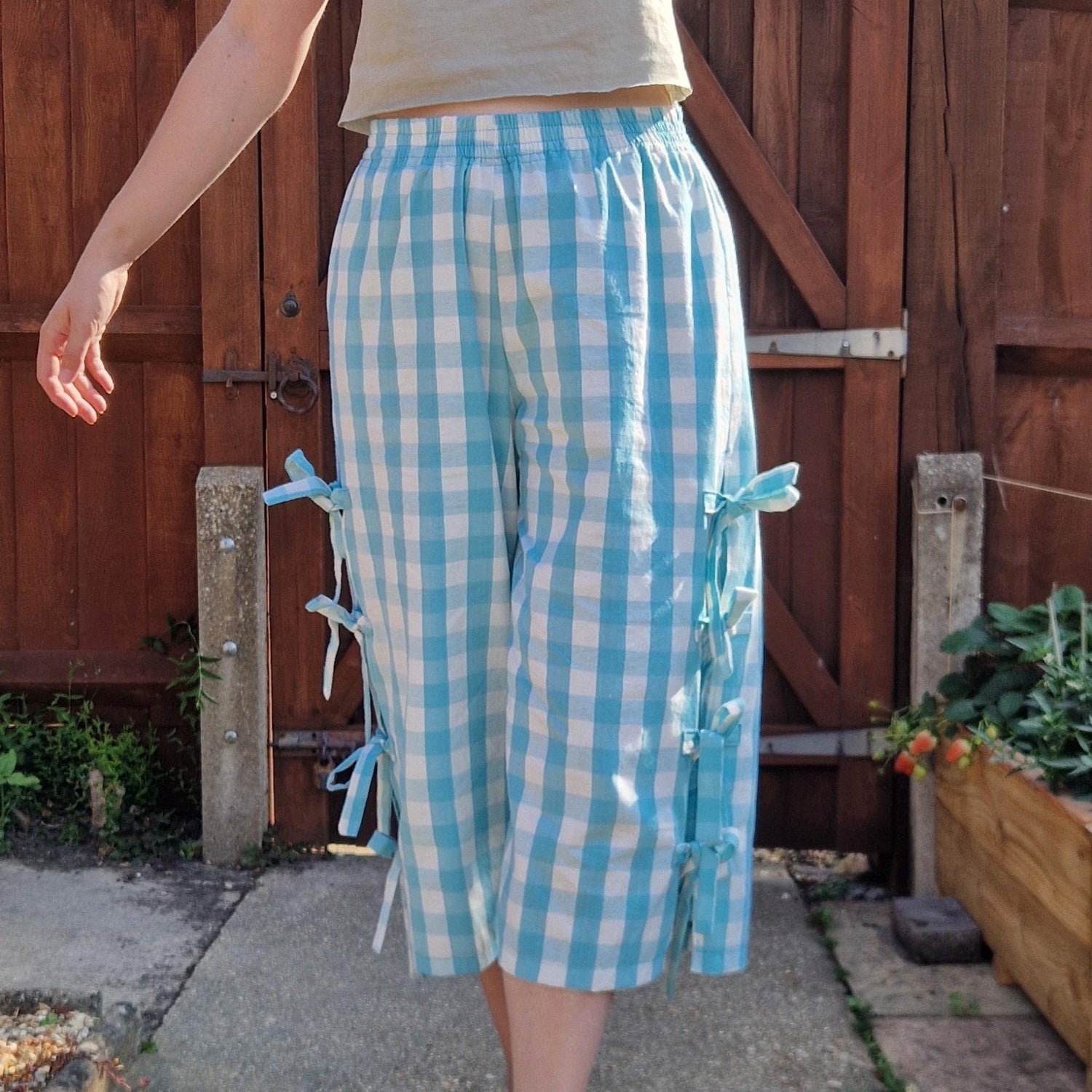Choosing between PDF and paper sewing patterns can be a bit of a head-scratcher, especially if you're new to sewing or looking to streamline your projects. Both have their perks — so which one’s right for you?
Let’s break down the pros and cons to help you decide.
📄 Paper Sewing Patterns: The Traditional Choice
Paper patterns are the go-to for many sewists — especially beginners. There’s something satisfying about unfolding a crisp tissue pattern and getting stuck in.
✅ Pros of Paper Patterns
No Assembly Required
You don’t need to print, tape, or trim anything. Just unfold the tissue paper, press flat if needed, and off you go. Great for when you’re keen to dive in.
More Accessible for Non-Digital Sewists
Paper patterns don’t rely on tech, printers, or internet access — ideal for screen-free sewing or retreats.
Easier to Pin Directly to Fabric
Tissue paper is easier to pin onto delicate or drapey fabrics compared to heavier printer paper used for PDFs.
Consistent Print Quality
No need to fuss over scale settings or blurry prints — paper patterns come ready to go with accurate sizing.
❌ Cons of Paper Patterns
Limited Design Access
Many indie designers only release PDFs. You might miss out on modern, unique patterns if you stick to paper.
Postage Delays & Extra Costs
Paper patterns cost more to produce and ship — not ideal if you're after an instant project start.
Takes Up Space
Once your collection grows, storage becomes a challenge.
Limited Instructions
Some paper patterns (especially from the Big 4 — Vogue, McCalls, Butterick, Simplicity) can be vague with instructions and illustrations.
One-Time Use (Unless You Trace)
Cut into it, and that size is gone — unless you trace, which takes extra time.
Harder to Replace
Lose or damage a piece? Unlike PDFs, you can’t just reprint it.
Paper patterns sounding like your cup of tea? Explore our collection of paper sewing patterns →
💻 PDF Sewing Patterns: The Modern Alternative
PDF sewing patterns have taken the sewing world by storm. They offer instant access and a wider range of indie designs.
✅ Pros of PDF Patterns
Instant Download Access
Buy it, download it, and you can be sewing within the hour — no post delays.
Multiple Sizes, Reusable Forever
Print any size, as many times as you like. Most PDF patterns include size layering so you only print the sizes you need — super handy for blending.
Eco-Friendly Options Available
Prefer less printing? Many offer A0 or projector files to cut straight from your fabric.
Print Only What You Need
"Print Your View" guides tell you which pages to print, saving on paper and ink.
Helpful Instructions & Extras
Modern PDFs often come with diagrams, photos, tips — even video tutorials or community links.
❌ Cons of PDF Patterns
Assembly Time
Printing at home means trimming and taping (or gluing) a lot of pages — patience required!
Printing Costs
Ink and paper costs add up. Copy shop printing is quicker but can add to the original cost.
Tech Confidence Needed
You’ll need to download, unzip, and print at scale (usually 100%). It’s a learning curve, but worth it.
Physically Awkward to Use
Printer paper is thicker than tissue and doesn’t pin or drape as easily. You might need to trace it out to make it easier to handle.
Can Feel Overwhelming for Beginners
All the extra steps can knock your confidence early on, especially if you're new to sewing.
PDF more your style? Check out our PDF sewing pattern range →
New to Sewing Patterns? Don’t Stress!
Whether you're leaning towards PDF or paper, the most important thing is this: don’t be afraid to get started. Every sewist was a beginner once — unpicking seams, taping pages upside down, and wondering what on earth a “notch” was. You’re in good company.
Here are some Top Tips to Help You get Comfy with Any Pattern:
Take Your Time
Read through the instructions before you dive in — whether it’s on paper or screen. Understanding the flow helps everything make more sense.
Trace Your Pattern First
Especially if you're sewing a more difficult pattern, it might feel like an extra step, but tracing your pattern means you can reuse your pattern again and again. Especially handy if you’re adjusting for fit or trying different views.
Use a Folder or Envelope for Each Make
Keep your printed pieces, instructions, and notes all together — whether it's a paper pattern or PDF. If you're modifying or doing any pattern hacks, always write down how you did it, what changes you made, in the case you want to make the pattern again. Trust us, future-you will thank you.
💬 Ask for Help
Sewing communities are full of kind, clever people who’ve been where you are. If you’re stuck, just ask — someone will always have a handy tip or tutorial.
🧵Most of all – enjoy the process. Whether you’re taping PDFs or unfolding tissue paper, you’re creating something handmade, wearable, and uniquely you. How brilliant is that? Happy Sewing!
👉 Ready to try one? Browse our sewing patterns here →



